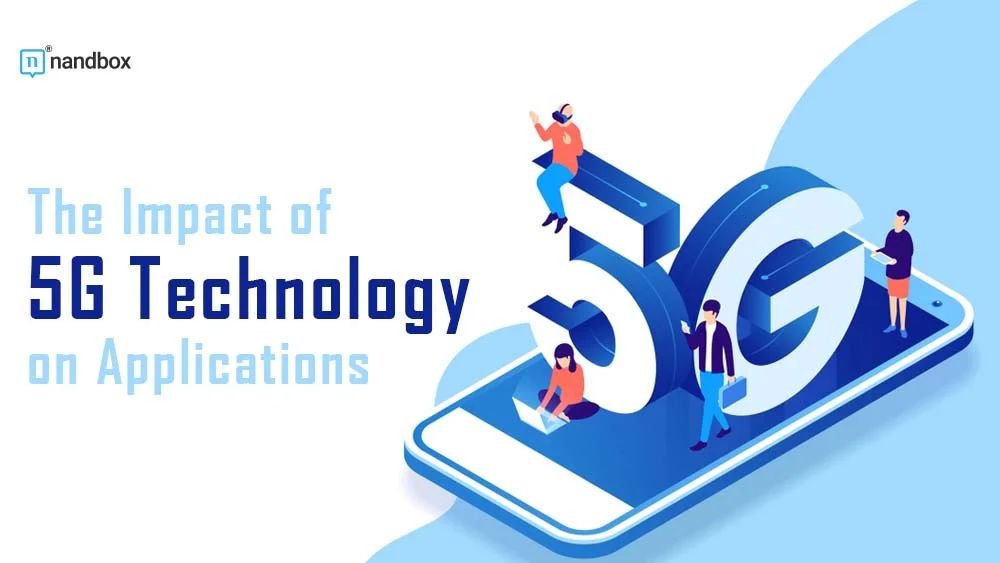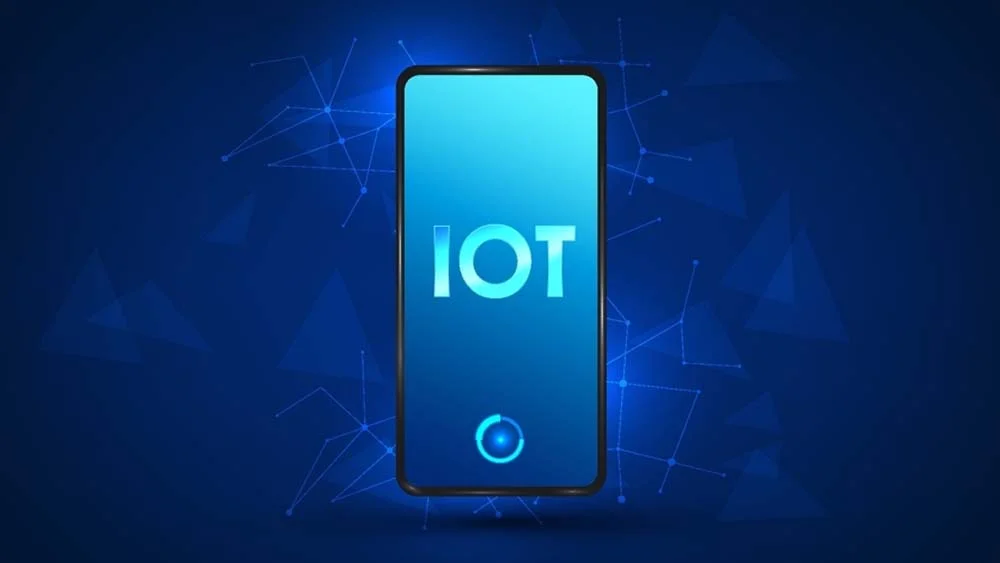Everything in life is interconnected in one way or another. It is how it has been since millions of years ago, and we can’t change that. A tiny thing can happen and have a major impact, and a major thing can happen and have no impact at all. So, always seek major impacts from the unexpected. But wait a second? What does this have to do with our article? Well, in this article, we will demonstrate the relationship between two of the most interconnected things ever, and not all people have an idea of this great connection. The relationship between the outstanding progress in mobile networks and the mobile development process. As far apart as the two may seem, they actually rely significantly on each other. Read on and learn everything about the impact of 5G on mobile app development.
What is 5G?
5G is the latest form and shape that mobile networks have reached. However, it is never the last. 5G comes after a series of four previous generations. Each also came with a set of advancements and unique features that were ahead of their times and considered breakthroughs. All these previous generations aimed to streamline the connection between people from all over the world. Each did it in its own way and according to its capabilities. What makes 5G a bit different is that it doesn’t aim to connect people only; it also intends to connect people, machines, devices, and objects. So, it is for connecting everyone and everything, literally.
The History of Mobile Generations
To further understand the long way that mobile networks have come and how they have really changed the way we view many things, let us have a brief look at each generation.
First Generation/1G
The first generation first appeared in the mid-80s and early 90s. It was a breakthrough and a revolutionary way of thinking about how communication can be done remotely. It came in accordance with the release of the first cellphone by Motorola. The 1G networks were only capable of transmitting audio calls. And although they were greatly advanced for such a time, they had multiple drawbacks, like the quality of calls and security. This made experts think about yet another advanced generation.
Second Generation/2G
The second generation and step of mobile networks came in hopes of fixing and correcting all the drawbacks of the first generation. 2G, or GSM, as it is commonly known, was another major and great step following 1G. 2G offered a more stable connection and quality for the calls, as well as security. It was also not limited to only audio calls; it also supported transporting data and different forms of media like SMS, pictures, and so on.
Third Generation/3G
Now let us move forward to the third step and the evolution of mobile networks, which we have dealt with for many years. Many people thought that the third generation of mobile networks was the ultimate one. I mean, what could you possibly want more than a stable connection, excellent quality, and double the speed of the internet that allowed us to explore the world of video conferencing and chatting? These, along with many other features, kept 3G at the top of the charts for many years. But, as the world progressed, people were in need of something more powerful and fast.
Fourth Generation/4G

The fourth generation, or 4G, is the one that most of the world uses at the moment. 4G offered users a one-of-a-kind experience that set the bar very high for upcoming technologies and mobile network generations. Through 4G, users enjoyed high and exceptional internet speeds. This paved the way for online gaming, HD video streaming, and music streaming.
Exploring the New World of 5G: The Key Features and Characteristics
As we mentioned each of the generations and gave a glimpse of their capabilities, it is also fair to mention the exceptional capabilities of the latest 5G. As we previously mentioned, 5G aims to connect everything and everyone. This is why one of the key features of 5G is massive machine-type communication. Massive machine-type communication, or mMTC technology, allows communication and data transmission between devices. Another thing that sets 5G apart is the download and overall internet speeds. 5G is planned to provide dramatically increased data transfer rates over older network generations. With download rates that reach up to several gigabits per second, it facilitates robust and buffer-free video streaming, lightning-fast file transfers, and enhanced overall internet performance.
5G is also an extreme energy saver, which matches up with the green movement that is taking over the world at the moment. With the advanced technologies used and the seamless connectivity and operation, 5G is a great energy saver, as it does not consume much to run perfectly and offers users the best quality.
In What Ways Will 5G Impact Mobile App Development?
Faster Speeds and Lower Latency
The much faster speeds and lower latency that 5G technology delivers are two of the major impacts and advantages it offers for app development. Users can expect download and upload rates to be several times greater than what is now possible with 4G. This equates to substantially faster app loading and operation, resulting in a more streamlined and seamless user experience. Also, because 5G has lower latency, interactions feel smoother and more responsive because there is less time between a user’s input and the app’s response. Developers now have new opportunities to construct more complex and resource-intensive apps, which were formerly impractical with slower network connections, thanks to these advancements in speed and latency.
Enhanced User Experience and Interactivity
Mobile app usability and interaction are expected to undergo radical changes with the introduction of 5G technology. The user experience would be seamless and effective if download and upload rates were faster for apps. No longer will users have to wait for their apps to load or endure slowness when interacting with them. In addition, 5G’s decreased latency guarantees that there is less time between a user’s input and the app’s response, enhancing interactions’ sense of immediacy and responsiveness. The improved user experience and interaction will provide developers with more chances and advanced tools and methods to make inventive and immersive apps that can genuinely engage and captivate users.
Increased Connectivity and IoT Integration
The enhanced connectivity and integration with the Internet of Things are among 5G’s biggest impacts on app development. Devices can now connect to the internet and each other at considerably higher rates and with less latency. As a result, a variety of IoT devices, including autonomous cars, wearables, and smart home appliances, can effortlessly communicate with apps. Developers now have access to a vast array of possibilities for developing apps that can interact with and control these devices, giving users a more organized and interconnected experience. Consider having a single app on your smartphone that you could use to control your home’s lighting, thermostat, and security system. 5G’s quick and dependable connectivity would make this app possible. Undoubtedly, the future of app development will be shaped by the greater connectivity and IoT integration made available by 5G, paving the path for a more interconnected and intelligent world.
Advanced Features and Capabilities
The development of apps now has access to new features and capabilities, in addition to improved connectivity and interaction with IoT devices brought on by 5G technology. 5G improves the ability to create comprehensive and dynamic apps. The high-speed and low-latency connections of 5G, for instance, can make it possible for users to experience augmented reality (AR) and virtual reality (VR) apps in a more realistic and engaging way. With AR and VR, industries may all be improved, which opens up new opportunities for very important fields like gaming, education, and healthcare. In addition, 5G makes it possible to integrate cutting-edge technology like machine learning and artificial intelligence into the development of apps. Personalizing user experiences, enhancing app performance, and making accurate suggestions are all possible with these technologies.
What Shall We Expect From 5G in the Future?
The question of what we expect is definitely a hard one. When people got introduced to the 1G, they claimed that this was the peak and no technology could beat it. When 2G came out, the exact same thing was said: We could message each other instantly now, for god’s sake! The same went for 3G and 4G. However, 5G exceeded all expectations with its impacts and powerful collaboration with IoT and many other technologies. It really is something out of this world.
We can’t swear that this is the end of the progressing world of mobile networks, as such an industry is in a state of continuous and unstoppable progress. I mean, did you know that 6G is already in talks and progressing? But this is a whole other topic that we will cover once it becomes a reality. 5G is not yet available in all regions and countries around the world, which also gives us the idea that we haven’t yet discovered all the capabilities. This leaves us with another question: can we expect more impact from 5G technologies?





